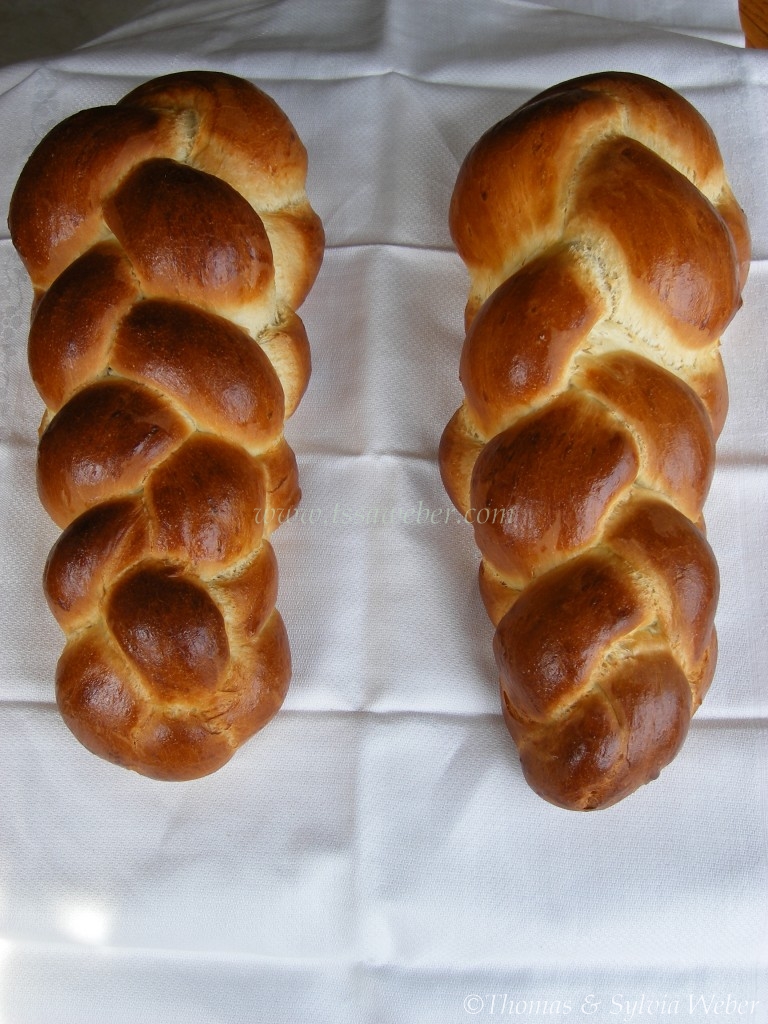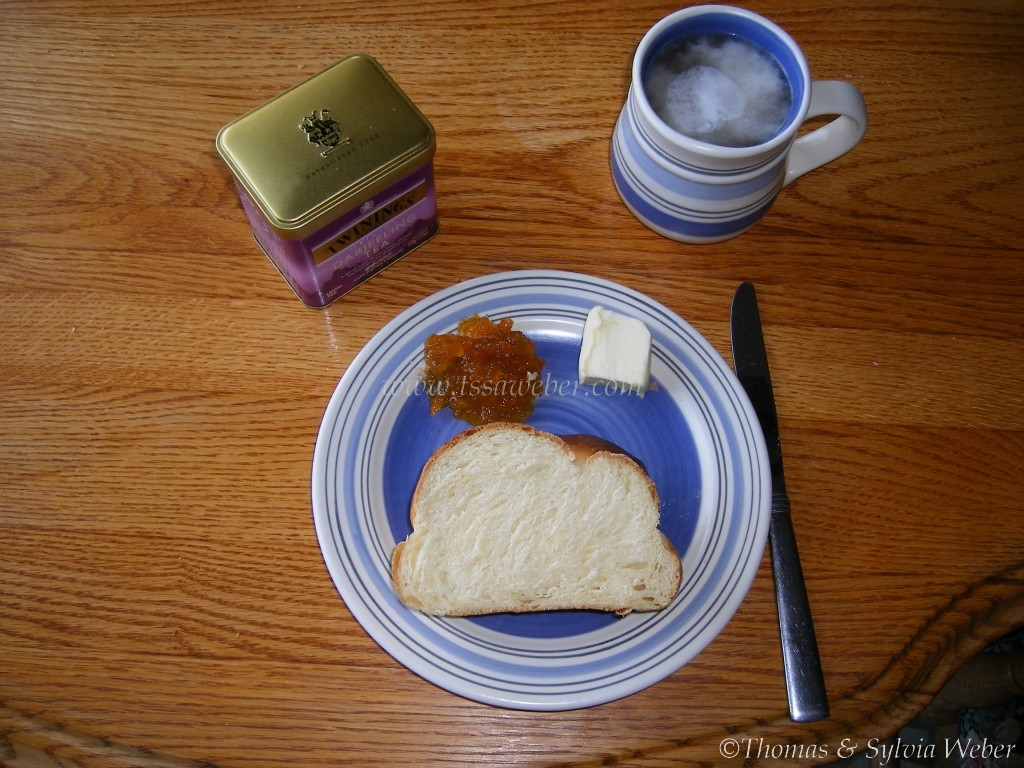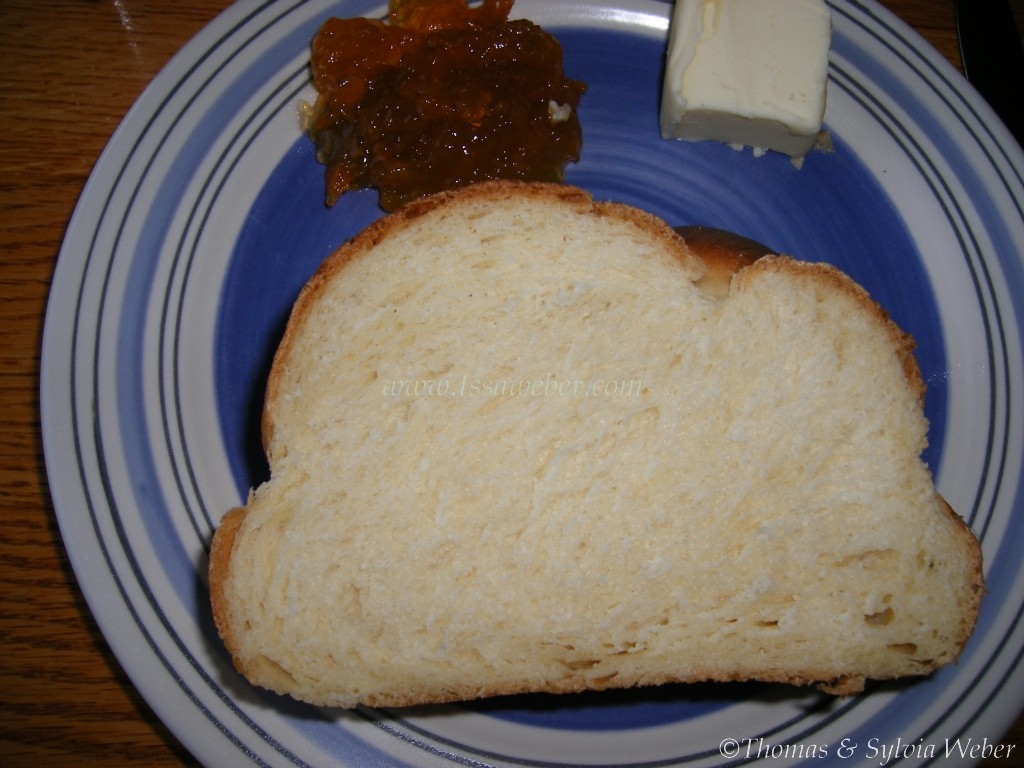In one of my favorite bread blog , TFL (The Fresh Loaf) Zopf was discussed and the questions motivated me to work on my recipe, with the goal to have at the end a fully understood, easy to use and “Americanized” recipe.
To have a solid and accepted expert on my side I used Dan DiMuzio’s book, “bread baking, An Artisan’s Perspective” to support my testing. On page 138 he defines rich dough and the effect of fat, eggs and sugar in dough. This was a good start as Zopf has all this ingredients in it. Sugar seems to be the least influential with just a little bit more than 2%, but butter (11%) eggs (14%) and to some degree milk(fat) certainly do have an impact. I also wanted to see what the difference between AP and Bread flour would be.
Using my usual recipe I had to adjust the hydration significantly using AP flour otherwise the dough would have been too wet to braid. The final result was ok from an appearance perspective but did taste too much like “normal” white bread and with the additional flour was also much dryer.
Not adding the eggs was a little bit trickier. Eggs are contributing to the hydration but also add fat and strength to the dough. I decided to substitute 75 % of the egg weight with ¾ milk and ¼ water. The dough turned out wetter than usual and I had a difficult time to roll the two strands for braiding. The final bread had less oven spring and turned out a little bit less roundish than usual. The crumb was denser and whither in color. The taste of the bread was even more like white bread.
It seems to me that adding eggs makes Zopf heavier and gives it the crumb structure I like. It also allows for more liquid without impacting the final result.
I will stick with my ingredients but have changed the process to make it easier to assemble the dough. First I add butter, salt (to make sure I don’t’ forget it again) and brown sugar, zero out the scale, add hot water to soften the butter, then the two eggs and with the cold milk I get to the correct total amount of liquid to balance the varying weight of the eggs. After that I add the flour and the yeast and knead 3 to 4 min on speed one and another couple of minutes, depending how the dough develops, on speed two of my KitchenAid. 3 stretch and folds with 45 min rest, after the 3rd st&f I divide the dough, braid it and proof for 20 min. Bake for 25 min at 375°F (convection). The bread should reach 200°F interior temperature.
Printable version as PDF file for your recipe folder: Zopf PDF
Printable version as XPS for your recipe folder: Zopf XPS
Zip file to download spreadsheet: Zopf ZIP
And here the result:



Hey Dan,
Thanks for your comments and I’m flattered too that such a bread capacity is commenting on my blog.
I’m very happy how my Zopf is and so is my family, I was just wondering what the egg is really doing to the overall bread and of course wanted to test it.
I like your book very much it is a great help if you want to further your bread baking skills.
Thomas
Hello,
I’m flattered that you would choose my book to aid you in your bread baking experiments.
I just wanted to mention that adding eggs to a dough (that is — whole eggs) will give you a lighter, more airy crumb structure than you would have if you left them out, or if you reduced their quantity significantly by comparison. The albumen in egg whites more than compensates for the fat content in the yolks, in that it contributes so much structure to the dough.
In any case, the loaves pictured above look great. Assuming that you were aiming for the typical close crumb of an enriched bread dough, you succeeded magnificently. Good luck with your continued exploration of bread baking principles.
Sieht perfekt aus! Well done!